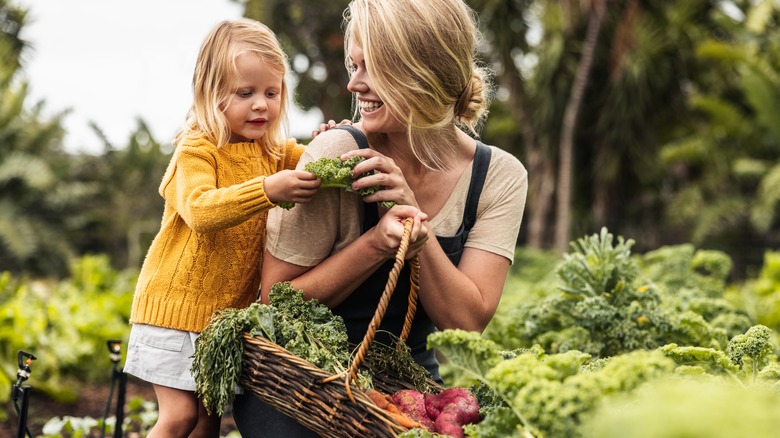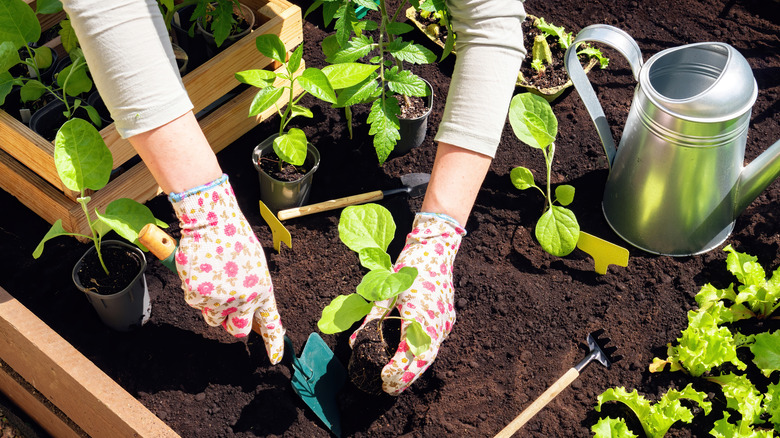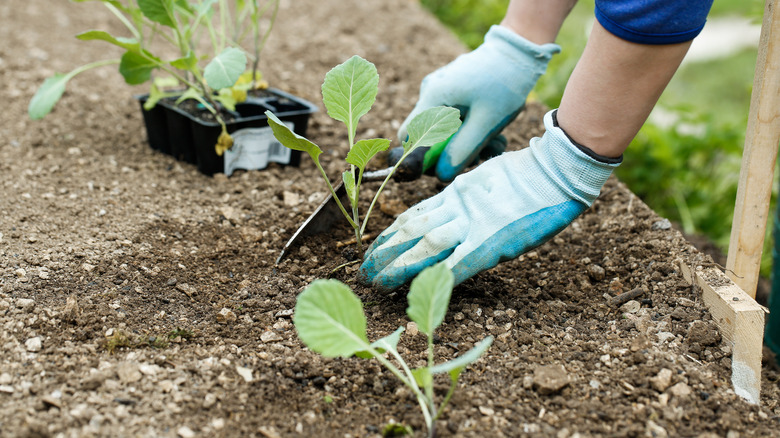Rotating Your Vegetable Garden Crops Is Incredibly Easy (And So Worth It)
Are you dreaming of the cool dirt in your hands and the smell of freshly grown tomatoes ripe off the vine? As you plan for your summer garden, you want to do everything you can to foster growth and production. That could include improving the soil with added nutrients, choosing high-quality seeds or starter plants, and getting the irrigation system perfected. All of this matters, but the positioning of the various crops in your garden is also a big deal that should not be overlooked.
By that, there's more to consider than just making sure the tomato plants don't block the sun from the rows of green beans. You also want to consider the value of rotating vegetable garden crops, which means moving them from one area of the garden to another. Take a moment to consider how well your garden did last year and key concerns with it, such as a specific pest infestation in one area or poor soil drainage in another. Then, make adjustments to your crop location this year to benefit from what you learned.
Consider how beneficial crop rotation is to your garden
Crop rotation, which simply means choosing a different place to plant each type of vegetable than they were in the previous year, is a valuable investment of your time. It helps reduce pest infestations and plant disease. Insects typically overwinter near their favorite food source during the warmer months. By moving locations, you're throwing them off and protecting your produce in the process, which is a good way to limit pesticide use in your garden.
The fertility of your garden is also a consideration. Consistent crop rotation can support better growth as each type of vegetable pulls out a different amount of nutrients from the soil. For example, when you plant green beans in one area and then till them in at the end of the season, that adds nitrogen to the soil. Planting green peppers, tomatoes, or pole beans in these areas the next year can help to boost their fertility because they benefit from a higher dose of nitrogen. This process helps to balance out the nutrient levels in soil across all plants.
Vegetable garden crop rotation doesn't have to be challenging
The ability to rotate crops easily depends on the size of your yard, the types of plants you invest in, and the overall soil maintenance you use. Most often recommended is the creation of a three-year (or longer) plan that enables you to move vegetables around to different areas. Focus on companion planting as a strategy to position vegetables that do best near each other. For example, onions, peas, and beans tend to do well together and compost nicely into the soil. After that season, place cauliflower, broccoli, and cabbages in that area, as they'll benefit from the added nutrients in the soil composted from the onions.
Plant celery, cilantro, carrots, and fennel in areas where you once grew potatoes, tomatoes, and eggplant. Zucchini, cucumbers, squash, and melons do well in soils once used for celery, fennel, and carrots. Some vegetables, like corn, lettuce, and basil, grow well in most areas, so use these to help fill in open spaces year-to-year.


